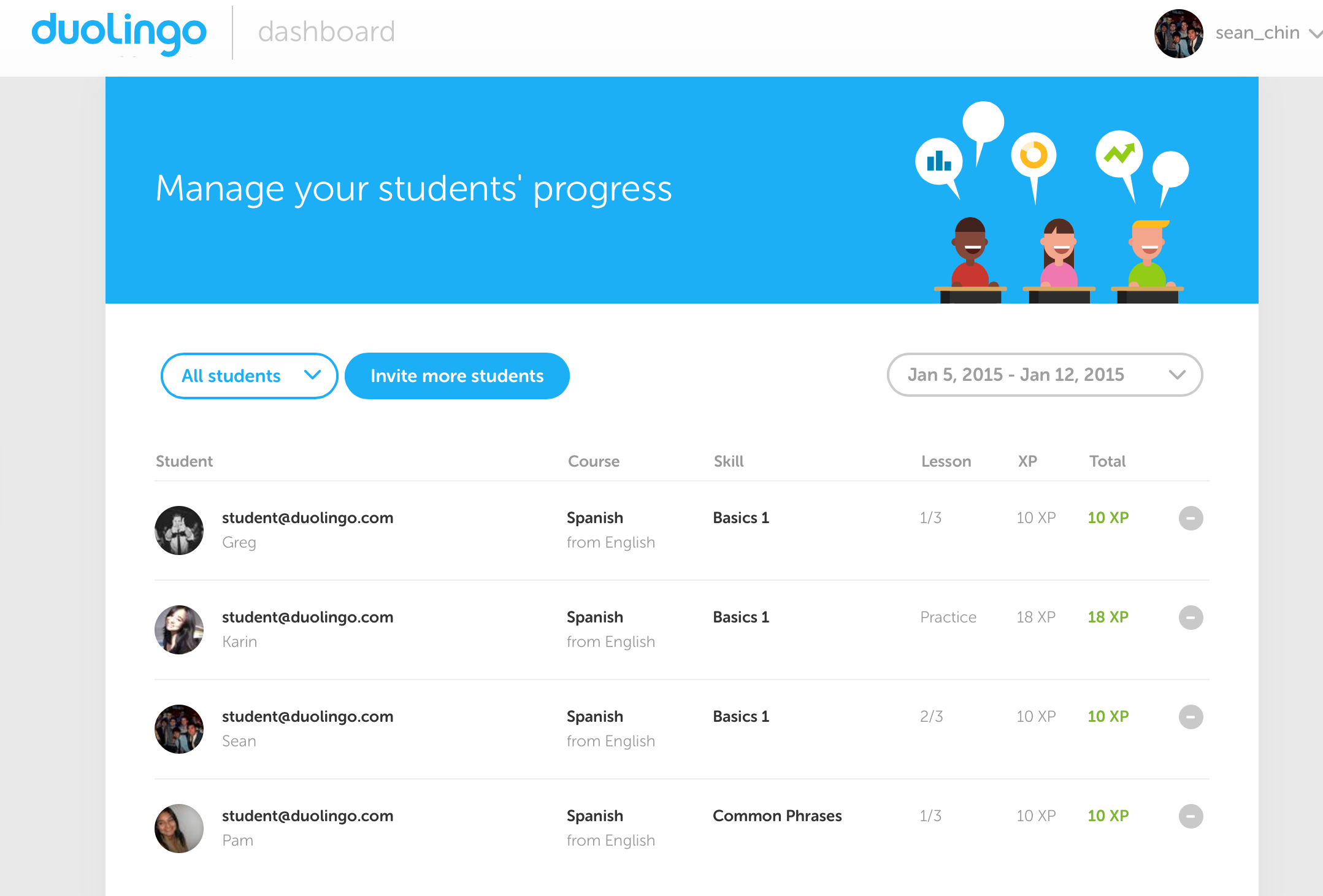When the language app DuoLingo announced last week that they were launching a school version that allowed teachers to create and track groups of users, the edtech world hailed the news.

DuoLingo reportedly has 20 million active users and is now set to make a major run in the school market with its new tools for teachers.
Jordan Shapiro welcomed the news, declaring it could create a new model in the crowded edtech space. He wrote on Forbes, “It shows us how interactive digital technologies can be used to create a more equitable educational landscape, not just in the U.S., but globally. It reminds us why we all bought into these networked technologies in the first place. Data-driven solutions don’t have to be all about corporate growth, they can also be about creating innovative ways to improve humanity’s lived experience in the world.”
So what is it about the DuoLingo model that has so much of the educational world so fired up?
Well, first of all it is free. Now that may seem obvious, but it more than just teachers don’t want to have to pay for something, it actually changes the adoption question in class. Now, teachers who want to use the app in class do not need to go through a purchasing system to get the app.
“Teachers can use it with their students without the need for funding from administrations,” Gina Gotthilf, DuoLingo’s head of communications, told Gigaom last week.
Additionally, the tech platforms in many classrooms are ready to use the app now.
The app obviously works on Android and Apple devices, but it also works on Chromebooks, one of the fastest growing tech platforms in the school space. In fact, when Google announced apps would start working on their cheaper laptop computers, DuoLingo was one of the first four apps they made sure would work.
But the app also has a secret weapon in the quest for school use and that is its business model.
It was earlier this summer than venture capitalist Fred Wilson wrote that DuoLingo’s business model made it something unique, saying, “It’s a model for freemium in online education. Provide the education for free but charge for the certification (testing). This is a very elegant implementation of freemium as it’s an easy on ramp and the customers who get the most value are the ones who pay.”
And this model of not charging for the education, but instead building the revenue around certification and service to other customers – DuoLingo crowdsources translation services they then sell to companies like CNN and BuzzFeed – allows the company to make education a core goal, according to the company leadership.
In launching the school service last week, DuoLingo co-founder Luis von Ahn told TechCrunch, “The goal is to provide a personalized learning experience that gives each student and instructor immediate feedback in the classroom. This can free up teachers’ time to concentrate on difficult concepts, answer questions, and assist students falling behind.”
So, what can game developers and other edtech services learn from this effort?
Consider the teacher use case.
DuoLingo can plug into a language class in multiple ways, serving as a place to drill vocabulary or a way to assess student knowledge in a certain area.
“You can review vocabulary and practice verb forms, but it’s not giving you any cultural context,” Elise Mueller, an academic technology consultant at Duke University told Wired.
“It’s great that it’s free and available to people, and it does support language learning, but the main pushback is: it can’t be the primary way you’re learning a language.”
Consider where there are already markets outside of the classroom already.
DuoLingo is not the first service to teach people how to speak a language. Rosetta Stone, BBC and countless book publishers have pushed language classes for years. So, DuoLingo naturally had a customer base outside of the classroom, but also inside.
Weigh how and when to monetize.
Back in 2012 when MIT dubbed the app the “cleverest business model in online education,” von Ahn noted that his model actually pushed the company to focus on the education, something he argued put his effort in a stronger position than a firm like Rosetta Stone.
“Most language-learning software providers have no incentive for you to learn,” he said. “Once [they] get your $500, they’re happy. We’ll do a lot to get you to come back, because it really matters.”
